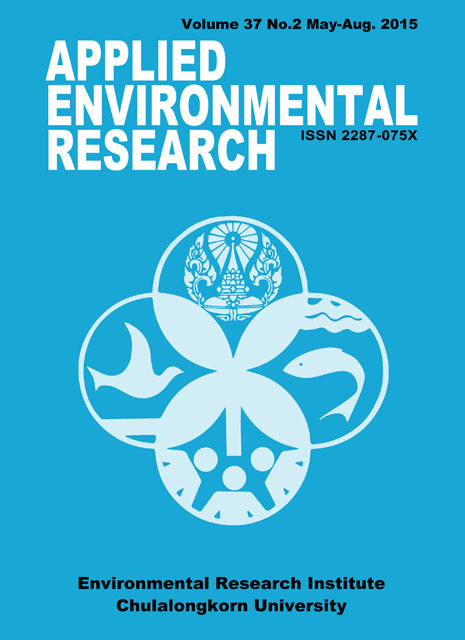Potential of Producing Refuse Derived Fuel (RDF) from Municipal Solid Waste at Rajamangala University of Technology Isan Surin Campus
Main Article Content
Abstract
The objective of this study is to explore the potential of producing energy from open-dump solid waste from Rajamangala University of Technology Isan Surin Campus. Heating value as well as the physical and chemical compositions were analyzed. The composition and heating value were compared to refuse-derived fuel quality standard. All waste samples were separated into combustible and non-combustible matter. Paper, plastic, food residue, textiles, rubber and leather were classified as combustible. In excess of ninety-nine (99 %) of open dump waste consisted of combustible matter as follows: mixed plastic (45 %), textile (19 %), food residue (18 %), paper (14 %), and leather and rubber (3 %). Non-combustible composted inert material consisted of only 1% of the open-dump solid waste. Moisture and total solid contents of open-dump solid waste were 51.6 % and 48.4 % (wet basis) respectively. Volatile matter and ash contents of those were 95.14 % and 4.37 % (dry basis) respectively. The heating value of the open-dump solid waste was 29 MJ kg-1, which is higher than the refuse derived fuel quality standard and re-sults reported in earlier studies [8,10,14]. This indicated the potential of open-dump solid waste to produce refuse-derived fuel (RDF). Therefore, it is possible that energy recovery through RDF production can be an effective waste management option for Rajamangala University of Technology Isan, Surin Campus. Further study should focus on production of RDF in terms of moisture content removal and compositions of RDF. Furthermore, characteristics of RDF should be determined to explore alter-native sources of renewable energy.
Article Details

This work is licensed under a Creative Commons Attribution-NonCommercial 4.0 International License.
Published articles are under the copyright of the Applied Environmental Research effective when the article is accepted for publication thus granting Applied Environmental Research all rights for the work so that both parties may be protected from the consequences of unauthorized use. Partially or totally publication of an article elsewhere is possible only after the consent from the editors.

